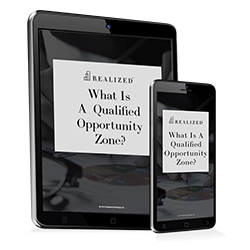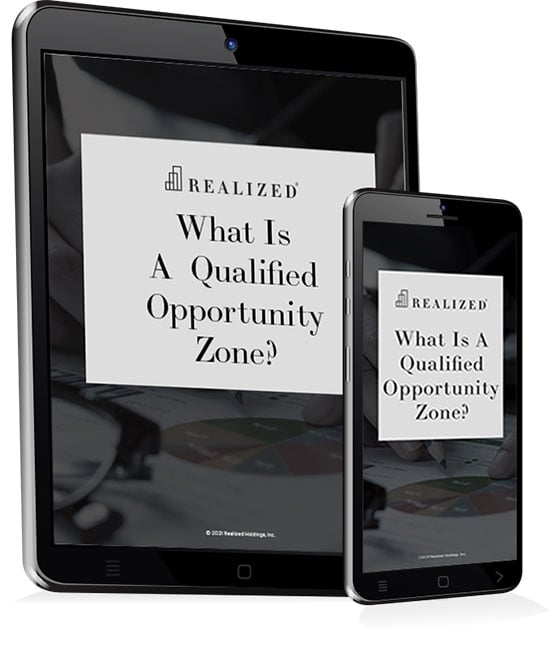
The Opportunity Zone program is remarkably straightforward. Passed under the Tax Cuts and Jobs Act of 2017, the initiative encourages you, the investor, to place capital gains into a Qualified Opportunity Fund (QOF). The fund, in turn, invests in federally designated, low-income Qualified Opportunity Zones (QOZs). In the meantime, you can defer paying taxes on those capital gains until Dec. 31, 2026.
While fairly basic, the QOZ program generates many questions, one of which is if gains from a 401(k) retirement fund can be rolled over into a QOF for the tax-deferral benefits. Specifically, the answer to the question of “can I use the 401(k) unrealized gain (loss) to invest in Opportunity Zones” is, technically, yes.
But this raises another question. Namely, why go to the trouble? Both the 401(k) and QOZ programs are already tax shelters. The better question here might be: “What tax shelter more effectively meets my risk profile?”
The tax shelter explanation
A tax shelter is used by investors to reduce taxable income. Such shelters can include certain types of investments, accounts with favorable tax treatments, and IRS-approved deductions. Interest expense and depreciation are tax shelters, as are 401(k) accounts and Qualified Opportunity Funds.
The 401(k) reduces the amount of your taxable income. Another benefit is that the capital gains earned while the money is sitting in your 401(k) account -- known as unrealized gains -- aren’t taxed. However, if you withdraw the funds before the age of 59 ½, the IRS automatically takes 20% of those proceeds, in addition to taxing the disbursements. From age 59 ½ and beyond, disbursements are still taxed, according to your tax bracket in the year you make the withdrawal.
Meanwhile, the QOZ program encourages you to invest your capital gains into a QOF; in doing so, you defer taxes on those gains until Dec. 31, 2026. Furthermore, income and gains earned from that investment can remain free from taxation, as long as you keep your money in that fund for at least 10 years.
Now, you could conceivably take the unrealized capital gains earned from your 401(k) and roll it into a Qualified Opportunity Fund. But that rollover might not be a good idea for a couple of reasons. First, the 401(k) gain is already free from taxes; rolling it over into a QOF could be more trouble than it’s worth. And second, doing so could mean a greater degree of risk.
Risky business
We’ve said it in previous blogs: all investments carry risk. Taking this one step further, QOFs can be riskier than 401(k) accounts.
Risks connected to 401(k) investments are mainly dependent on the movement of the stock and bond markets, depending on the assets underlying the account. You, the investor, bear that risk (versus, for example, your employer). You can potentially mitigate the 401(k) risk by adjusting your asset allocation and contributing enough to earn a full employer match, if your company offers such a benefit.
It can be easier to perform due diligence on 401(k) investments, because of available performance information about rates of return, investment profiles, betas and other ratios, and historical data. On the other hand, QOZs are very high-risk investments. QOFs support ground-up developments (or renovations) in unproven locations, leading to potentially questionable rates of return. Furthermore, Opportunity Zone rules and regulations can vary, depending on the state, and even the municipality, your QOF might target. Finally, because the program remains relatively new, little historical or performance information is available.
From shelter to shelter
To conclude, you certainly could transfer your 401(k) gains into a QOF. But there really is no need, given both are tax shelters. From a purely investment standpoint, doing so would likely be more trouble than it’s worth.
The better question to ask yourself should be whether the 401(k) or QOZ is a viable investment, based on your risk appetite, investment goals, and portfolio enhancement. Answering these questions before investing, and combining those answers with careful due diligence, can help ensure you are making the correct decisions for your particular needs and objectives.
There are material risks associated with investing in QOZ properties and real estate securities including liquidity, tenant vacancies, general market conditions and competition, lack of operating history, interest rate risks, the risk of new supply coming to market and softening rental rates, general risks of owning/operating commercial and multifamily properties, short term leases associated with multi-family properties, financing risks, potential adverse tax consequences, general economic risks, development risks, long hold periods, and potential loss of the entire investment principal.
Past performance is not a guarantee of future results. Potential cash flow, returns and appreciation are not guaranteed. IRC Section 1031 is a complex tax concept; consult your legal or tax professional regarding the specifics of your particular situation.
This is not a solicitation or an offer to sell any securities. There is no guarantee that the investment objectives of any particular program will be achieved.



